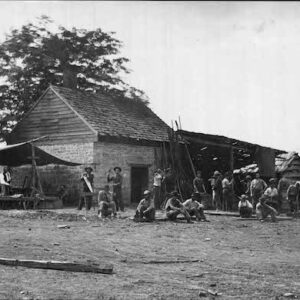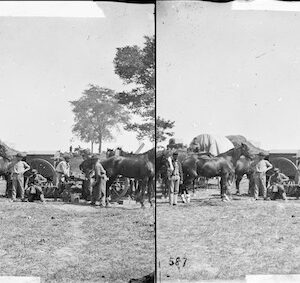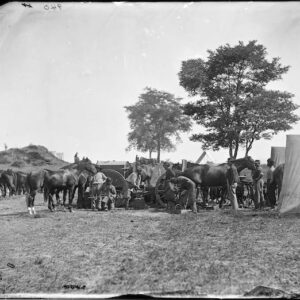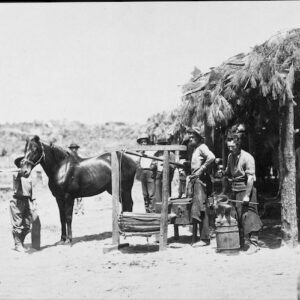Tag: anvil
 Wikipedia says: An anvil is a metalworking tool consisting of a large block of metal (usually forged or cast steel), with a flattened top surface, upon which another object is struck (or “worked”).
Wikipedia says: An anvil is a metalworking tool consisting of a large block of metal (usually forged or cast steel), with a flattened top surface, upon which another object is struck (or “worked”).
Anvils are as massive as is practical, because the higher their inertia, the more efficiently they cause the energy of striking tools to be transferred to the work piece. In most cases the anvil is used as a forging tool. Before the advent of modern welding technology, it was a primary tool of metal workers.
The primary work surface of the anvil is known as the face. It is generally made of hardened steel and should be flat and smooth with rounded edges for most work. Any marks on the face will be transferred to the work. Also, sharp edges tend to cut into the metal being worked and may cause cracks to form in the workpiece. The face is hardened and tempered to resist the blows of the smith’s hammer, so the anvil face does not deform under repeated use. A hard anvil face also reduces the amount of force lost in each hammer blow. Hammers, tools, and work pieces of hardened steel should never directly strike the anvil face with full force, as they may damage it; this can result in chipping or deforming of the anvil face.
The horn of the anvil is a conical projection used to form various round shapes and is generally unhardened steel or iron. The horn is used mostly in bending operations. It also is used by some smiths as an aid in “drawing down” stock (making it longer and thinner). Some anvils, mainly European, are made with two horns, one square and one round. Also, some anvils are made with side horns or clips for specialized work.
The step is the area of the anvil between the “horn” and the “face”. It is soft and is used for cutting; its purpose is to prevent damaging the steel face of the anvil by conducting such operations there and so as not to damage the cutting edge of the chisel, though many smiths shun this practice as it will damage the anvil over time.
Showing all 8 resultsSorted by latest
-

Image ID: AYVH
$0.99 -

Image ID: ANND
$6.99 -

Image ID: AJRZ
$6.99 -

Image ID: AQMK
$6.99 -

Image ID: AANS
$4.99 – $5.99 This product has multiple variants. The options may be chosen on the product page -

Image ID: AIMF
$6.99 -

Image ID: AIAG
$4.99 -

Image ID: AHUB
$3.99 – $4.99 This product has multiple variants. The options may be chosen on the product page